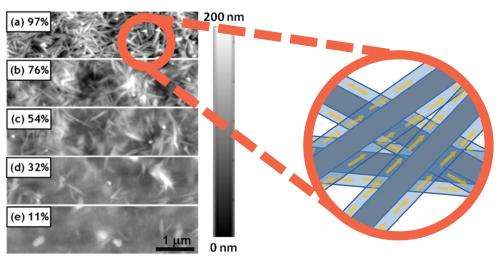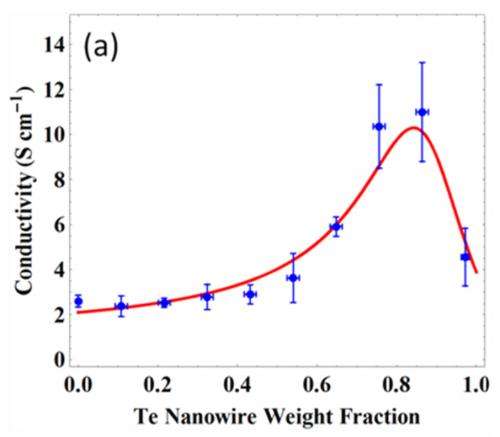Composite organic/inorganic thermoelectric is more than sum of its parts

(Phys.org) —A team led by Berkeley Lab Materials Sciences Division's Jeffrey Urban and Rachel Segalman have discovered highly conductive polymer behavior occurring at a polymer/nanocrystal interface. The composite organic/inorganic material is a thermoelectric – a material capable of converting heat into electricity – and has a higher performance than either of its constituent materials. The results may impact not only thermoelectrics research, but also polymer/nanocrystal composites being investigated for photovoltaics, batteries, and hydrogen storage.
An efficient thermoelectric material made from polymers and nanocrystals is an attractive prospect as it would be significantly cheaper to fabricate than traditional thermoelectrics. Here the researchers synthesized tellurium nanowires with PEDOT:PSS, a common conducting polymer, and cast thin films of the resulting solution. Intriguingly, the team found that the composite films had higher thermoelectric performance than either the polymer or nanowires alone.

The researchers rationalized their unusual results by modeling the films as a composite of three distinct materials: nanowires, bulk polymer, and a new interfacial polymer phase with increased electrical conductivity. The highly conductive interfacial polymer phase suggests new routes to enhancing electronic and thermal properties in hybrid materials and devices, for thermoelectric energy conversion and other energy applications.
More information: Coates, N. et al. Effect of Interfacial Properties on Polymer–Nanocrystal Thermoelectric Transport, Advanced Materials 25, 1629-1633 (2012). DOI: 10.1002/adma.201203915
Journal information: Advanced Materials
Provided by Lawrence Berkeley National Laboratory




















